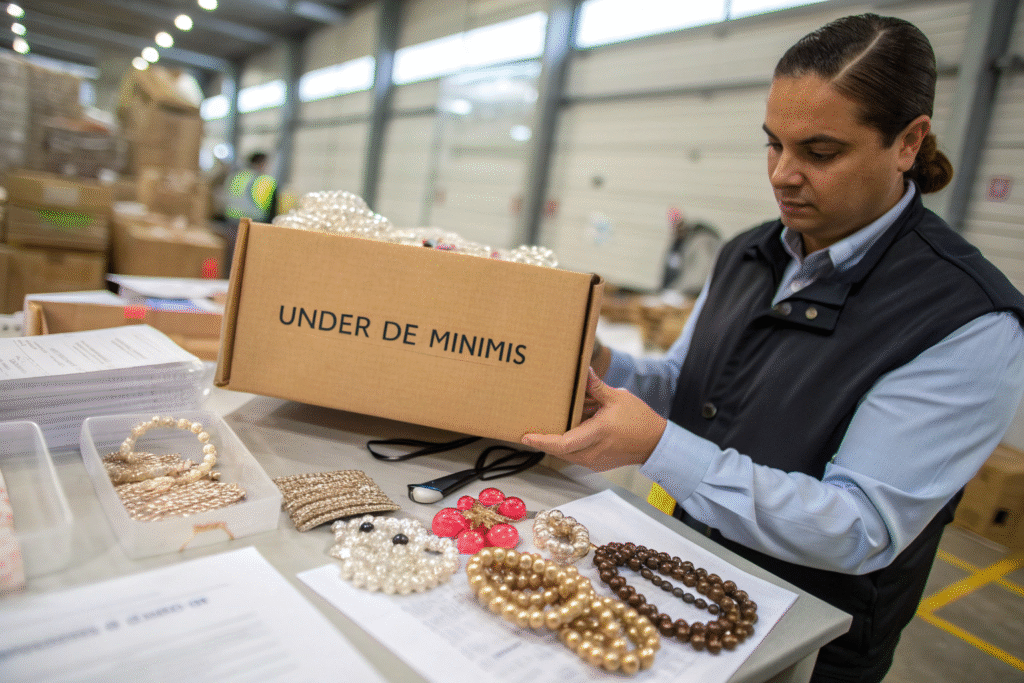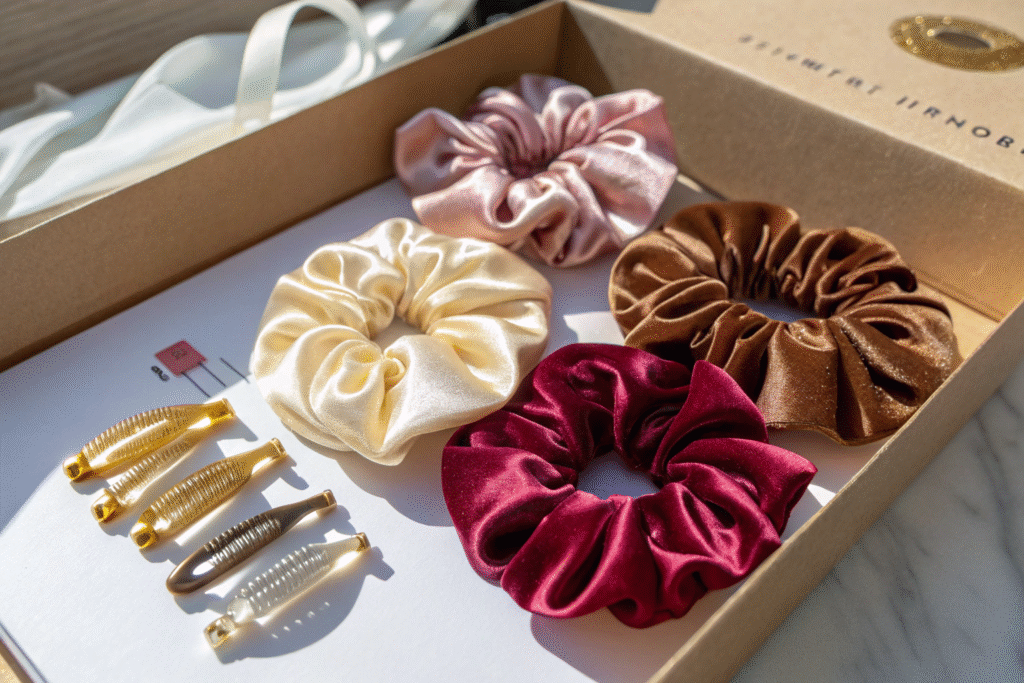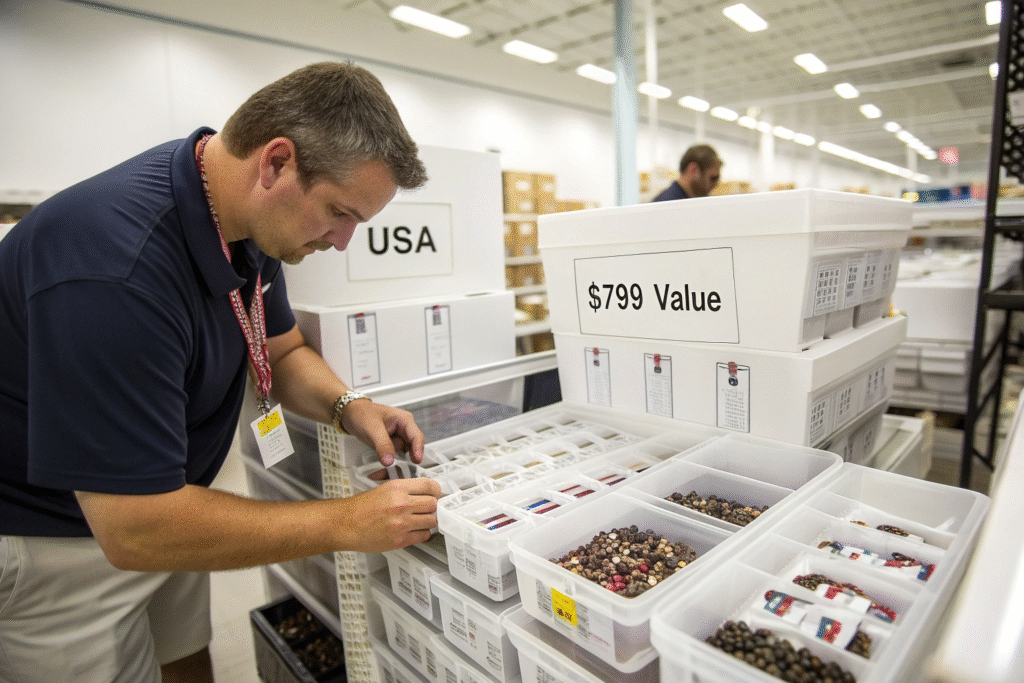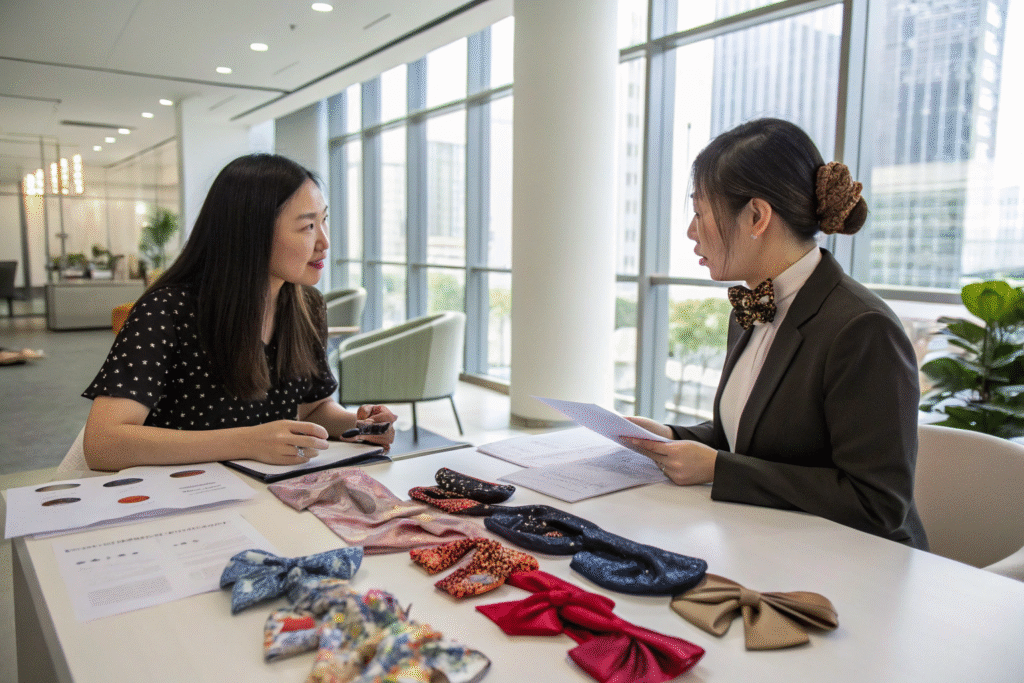Global importers of hair accessories are increasingly facing the challenge of rising tariffs, unstable shipping costs, and fierce competition from fast-moving brands. The de minimis rule in the US allows shipments valued under a certain threshold to enter without paying tariffs, which can be a decisive advantage for wholesalers, boutique owners, and e-commerce sellers. But taking advantage of it requires the right product mix, pricing strategy, and shipping method.
By understanding how to source hair accessories that qualify for tariff exemptions, you can protect your profit margins while keeping prices attractive to customers. In this guide, I will share proven strategies based on our own export experience, helping you identify the right products, manage shipment values, and work with compliant factories to avoid customs issues.
When done correctly, sourcing under de minimis is not only a cost-saving approach—it’s a competitive advantage that can help you scale your accessory business while avoiding unpredictable tariff hikes.
Understanding De Minimis and Its Impact on Hair Accessories
The de minimis threshold in the US is set at $800 per shipment. This is not per item but for the total shipment value. For hair accessory buyers, that means you can ship hundreds of small items like pearl pins, claw clips, or silk headbands as long as the total declared value stays below the limit.
This rule allows importers to bypass tariffs entirely, significantly lowering landed costs. Many sellers use this to gain a pricing edge, reinvesting the savings into marketing or offering competitive retail prices.

What Is the Current De Minimis Threshold in the US?
The US Customs and Border Protection (CBP) confirms that shipments valued at $800 or less are exempt from tariffs. This applies regardless of the number of items in the shipment.
For detailed regulations, see the CBP De Minimis Rule and check your freight partner’s import guidelines before shipping.
How Does De Minimis Affect Wholesale Hair Accessories Pricing?
Avoiding tariffs can make your products up to 10–20% cheaper for US customers, depending on HS codes and duty rates. This is especially important for fast-turnover items like scrunchie headbands or pearl barrettes, where margins are tight but sales volume is high.
Choosing the Right Hair Accessories for Tariff-Free Shipping
Not all hair accessories are equally suited for de minimis shipping. You need items that are light, compact, and high in demand so they can be shipped economically while maximizing value.

Which Hair Accessories Offer the Best Margins Under De Minimis?
Items like pearl hairpins, acrylic claw clips, and elastic headbands are ideal because they pack high resale value into a small, light package. For market insights, check Vogue Accessories or Statista Fashion Accessories to spot trends before they peak.
How to Balance Quality and Price for Bulk Buyers?
Even in tariff-exempt sourcing, quality drives repeat business. Partnering with a Chinese OEM like HairAcc means you can access bulk pricing without sacrificing product standards. Always request samples and material details—see guides like Textile Exchange Material Standards—to verify specifications before production.
Logistics Strategies to Stay Within De Minimis Limits
The most successful importers use logistics as a competitive weapon. By splitting shipments and scheduling deliveries strategically, you can consistently stay under de minimis while meeting inventory needs.

How to Split Shipments Without Delays?
This involves planned staggered shipping—breaking a $2,400 order into three separate $800 shipments, sent on different days. Partners like FedEx Cross Border provide tools for shipment value management and customs compliance.
Can Fulfillment Centers Help Manage De Minimis Shipments?
Yes. US-based fulfillment centers such as ShipBob or Rakuten Super Logistics can receive bulk goods, break them into smaller parcels, and ship domestically. This keeps you compliant while benefiting from container freight rates.
Working With Manufacturers to Ensure Compliance
The right manufacturing partner is crucial to making de minimis sourcing work. From proper HS code classification to precise invoice preparation, compliance reduces the risk of customs holds.

How to Communicate De Minimis Requirements to Suppliers?
Explain your target shipment value and packing requirements clearly. Include these in the purchase order. Using platforms like Alibaba Trade Assurance ensures both parties understand the terms and prevents disputes.
Why Choose a Factory Experienced in US Customs Processes?
Factories like HairAcc already handle thousands of compliant shipments to the US. They know how to prepare documents to avoid red flags in customs systems. You can verify a supplier’s experience through resources like the USITC DataWeb.
Conclusion
Sourcing under the de minimis threshold is one of the most effective ways to cut costs in the competitive US hair accessories market. By choosing lightweight, high-demand items, planning logistics carefully, and working with an experienced manufacturer, you can avoid tariffs while keeping your supply chain efficient.
If you are ready to create your own tariff-exempt hair accessory collection, contact our Business Director Elaine at elaine@fumaoclothing.com. We will help you with product design, production, compliance, and shipping so you can focus on growing your brand.









